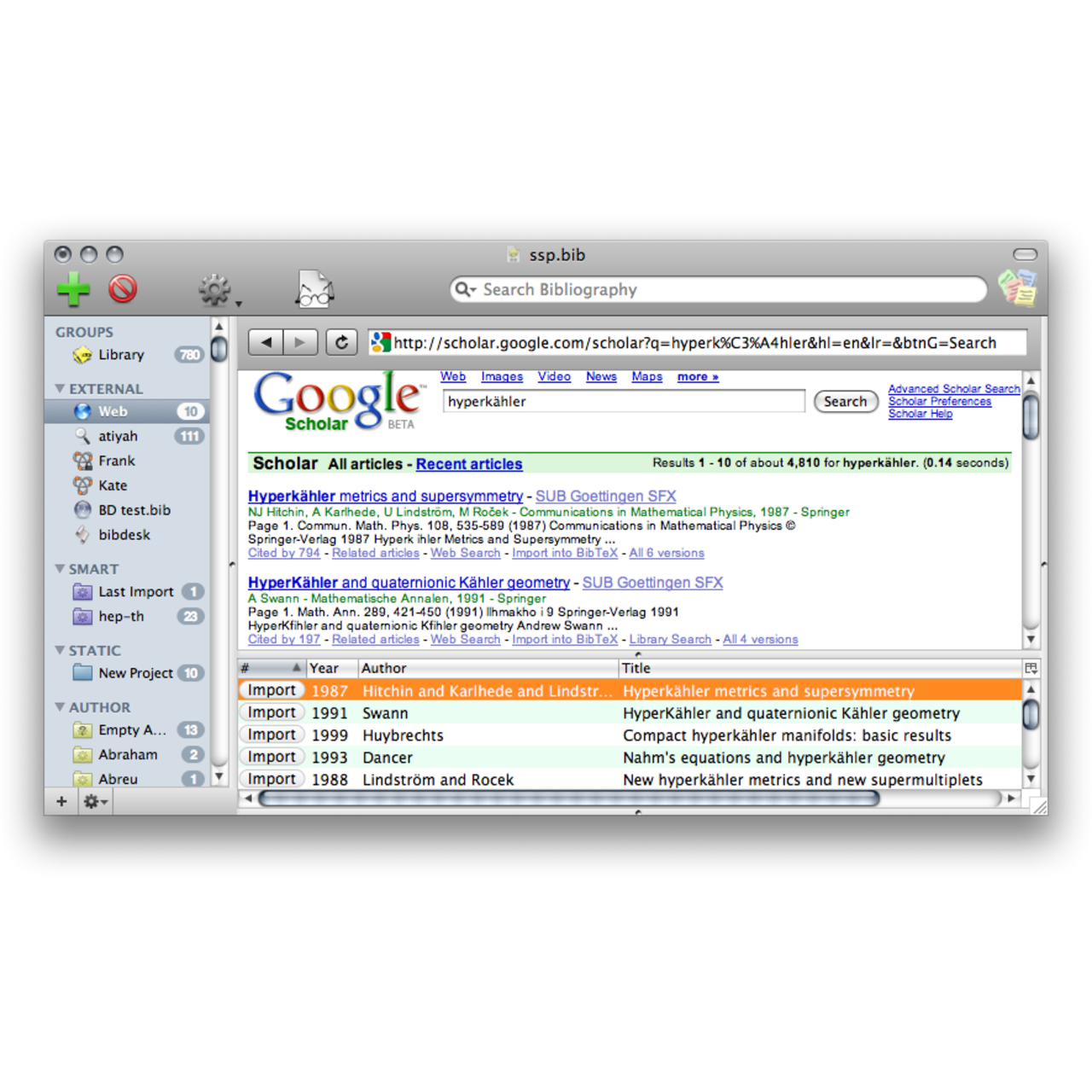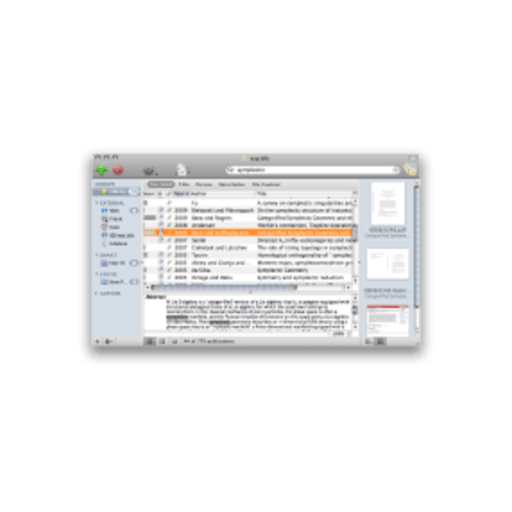
A few seconds later, and all the paper metadata is in BibDesk and the files are renamed and in the proper place. An AppleScript glues it all together, allowing me to select a whole bunch of PDFs and run the script. I can pipe the output of this script into arxiv2bib to fetch the metadata from the arXiv API. Apple’s Script Editor, however, leaves something to be desired. While it’s been billed as closer to natural language, I find it a bit quirky, but I’m slowly getting used to it. If it finds something, it prints the captured part, that is, the actual number. AppleScript is designed to help automate simple tasks that you need to do often, without the need for learning a high level language like Objective C. Please visit the BibDesk Wiki or follow the links below for additional. Any contributions to further its development are appreciated.
Bibdesk applescript free#
BibDesk is developed as an open source project and available free of charge. The regular expression looks for a line beginning with an arXiv identifier, which looks like arXiv:1203.1029v1. BibDesk’s services will simplify using your bibliography in other applications and are particularly well suited for L A T E X users. Pdftotext " $1 " - | perl -ne 'if (/^arXiv:(\d Three steps is better than the ten it would take without AppleScript and the arXiv API, but why can’t the computer extract the identification number automatically? BibDesk automatically renames the paper based on the metadata and moves it to a Dropbox subfolder.
Bibdesk applescript pdf#
An AppleScript takes the result of the script and imports it into BibDesk.ĭrag the PDF onto the reference in BibDesk. Use my script arxiv2bib, which I have written about before to get the paper’s metadata from the arXiv API. For each PDF I got from the arXiv I do the following:įind the arXiv identification number, which is watermarked on the first page of the PDF. Also, it stores its database in a plain text file, and has done so since long before it was cool.Įvery now and then I gather all the papers from my Dropbox and iPad and import them into BibDesk. I use BibDesk to organize the papers I read, mostly because it works so well with Latex, which all mathematicians use to write papers.

(Papers from the 60’s, which I do sometimes read, usually require a trip to the library.) It is a convenient place to find slightly older papers because journals have terrible websites. This is the best place to find recent papers, since they are often posted here a year or more before they appear in a journal.


Most math papers I read come from the arXiv (pronounced archive), a scientific paper repository where the vast majority of mathematicians post their journal articles. This week, my method for keeping track of journal articles I use went from kind of cool to super awesome thanks to pdftotext and a tiny Perl script. Organizing journal articles from the arXiv Organizing journal articles from the arXiv Nathan Grigg


 0 kommentar(er)
0 kommentar(er)
